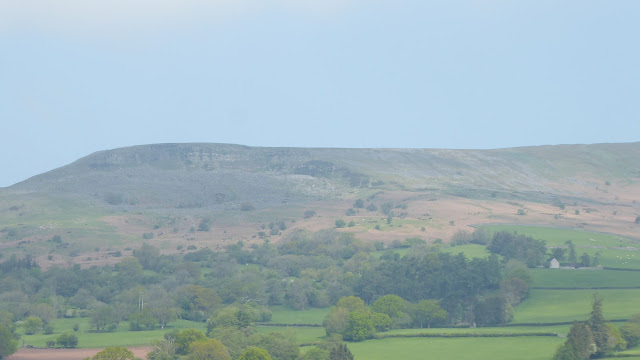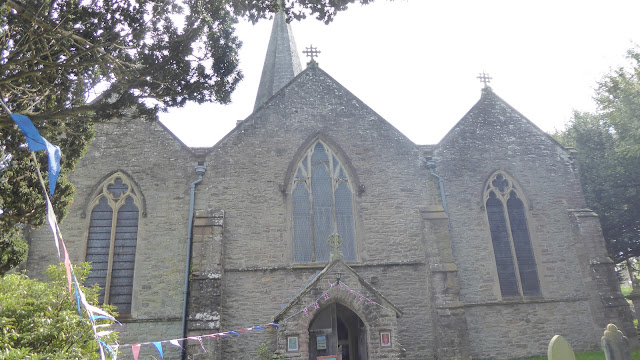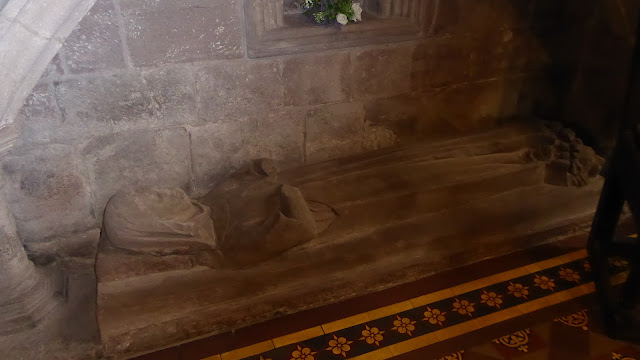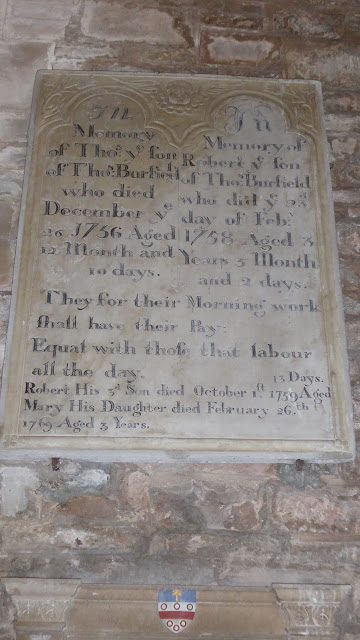I've been to Hay this morning, to market. Photos from that tomorrow, but I really must share a few church photos from Crickhowell before they become a dim and distant memory.
The church of St Edmund's at Crickhowell was built on land given by Lady Sybil Pauncefoot in 1303, which is when the church was first built. It is in a typical 14th C cruciform plan, but all but the chancel is much altered. Lady Sybil's father was Sir Hugh Turberville - they get about a bit, those Turbervilles.
I couldn't resist taking a photo of this fabulous Wisteria on the wall opposite the church. Below, looking up at the mountain above the town.
A rather splendid flower display had been made to celebrate the King's Coronation. Behind it the carved pulpit.
Looking down into the chancel.
The Lady chapel with figure of Christ on a carved wooden Reredos designed by W D Caroe, c.1934.
A superb alabaster reredos featuring the Last Supper. This dates to 1893.
There is glass by Charles Eamer Kempe, not sure if this is one of his designs.
Here are Sir Grimbald Pauncefoot (1287), leaning casually on one elbow!
Opposite, his wife Sybil, missing not just one hand but the both! She had one removed and sent to the Holy Land to pay for his release after he had been captured and ransomed.
The three lionels of the Pauncefoot coat of arms.
Whichever church or churchyard you go to in Wales, you are never NEVER far from a Prosser or two . . .
Bless them all, so young, especially the one who only lived 13 days.
The serpentine-section bowl of the font dates to 1668 with C19th additions.
View across the churchyard.
Finally, over the mynydd on the way home. Imagine the sound of Skylarks, and the sight of several breeding pairs of Redstarts. We have a pair nesting in a tree (or overgrown Box bush) right behind our stable block. So good to see them again.





















I have rested up all week. Plus drunk lots more today. It did me the power of good seeing friends, having a laugh, pottering slowly round Hay and then driving home by the incredibly scenic route. I will balance that against any tiredness from walking up Hay High street and back. I'll report back in the morning :)
ReplyDeleteWell, I hope you haven't overdone things! I shall fret until we hear otherwise, but it is good to be out as the weather improves.
ReplyDeleteThat Wisteria is truly something else, I've never seen it like that before. The fragrance must intoxicating too.
Love your new header, must look spectacular in person! All those poofy white trees {mayflower?}
Nope. Actually I feel better this morning. Slight soreness between two bones in my right hand but I haven't had to reach for the Ibuprofen the moment I got up, so that's a positive.
DeleteAll the poofy white trees are indeed May blossom (Hawthorn). We had a mast year last year for Sycamores etc - I am wondering if the Hawthorns are having one this year. They are drenched in blossom - you couldn't get a pin between the blooms.
Now I have passed that church countless times but never had the opertunity to stop off for a visit. Very intersting church with those effigies. I thought Sybil cutting off her hand was a myith.
ReplyDeleteCould be a myth, but quite often old tales have an element of truth. Crickhowell is such a lovely little town - worth a wander round, for the church, the castle remains and the excellent shop selling local beers and ciders!
DeleteNow that is a very interesting church... A brave woman giving up one of her hands.
ReplyDeleteGod bless.
There are some interesting bits and pieces but NO little history notes attached to the Lady Sybil and Hugh Tuberville memorials at all, which is an oversight to my historian's mind. It may be a myth, or she might have had a servant with one hand instead of chopping her own off.
DeleteYou really live in a gorgeous place. The views out across the hills are so green and lush. So, as usual, I wind up looking words up. I see that Mynydd with a capital is a specific mountain. Mynydd, uncapitalized...is that the same mountain, or is there a feature which makes a mountain 'mynydd'. Enlighten me, oh wise one!
ReplyDeleteMynydd translates as mountain (although in these parts, big hill can be substituted!) If it's a named mountain/hill, then a capital, but mynydd generally - like me taking the mynydd road home or looking up at the mynydd, is lower case, more descriptive than title. Thismonth, on my jaunts out, I have to pinch myself sometimes because it is just SO BEAUTIFUL here in May, and I count my blessings to live in such a wonderful area.
Delete